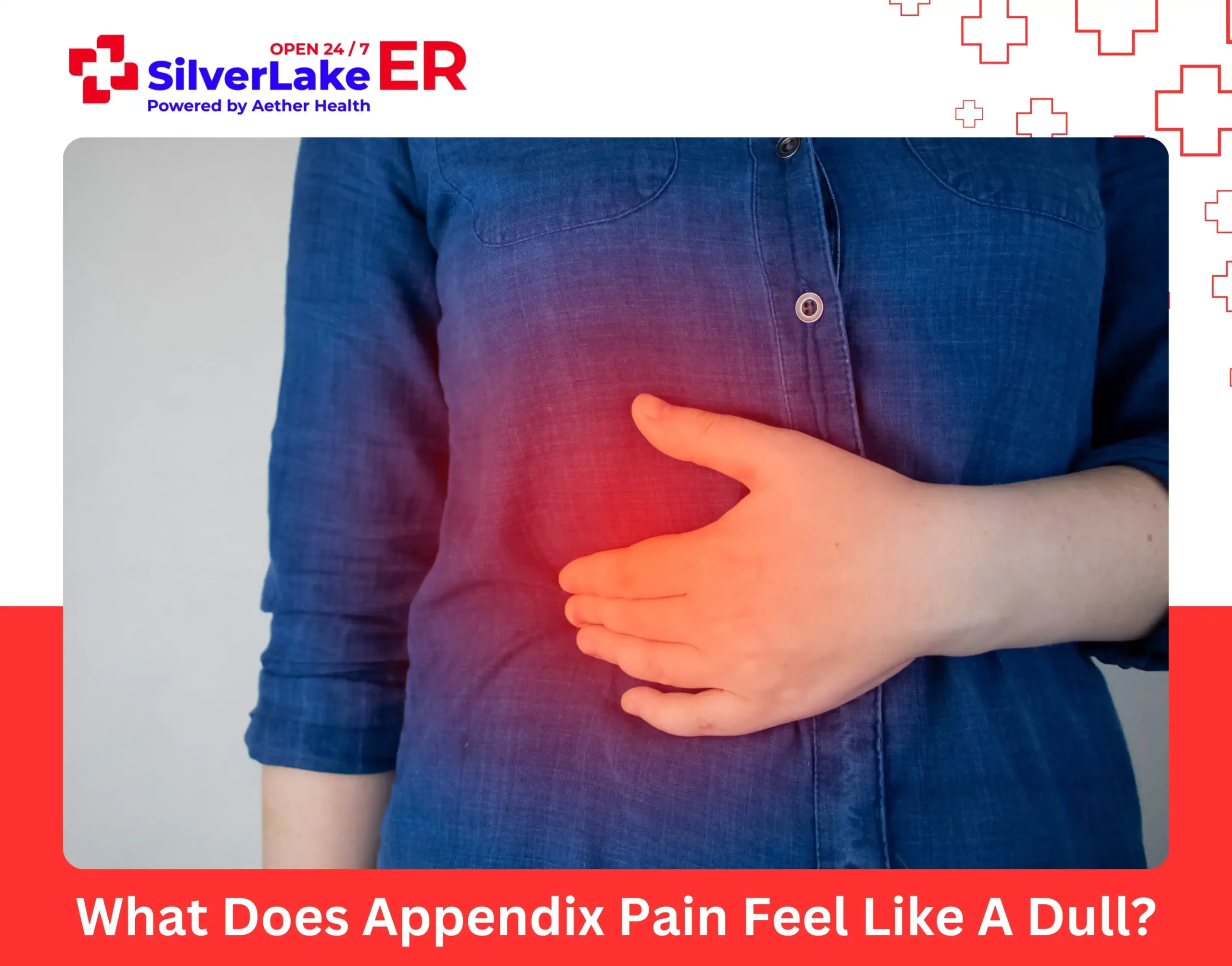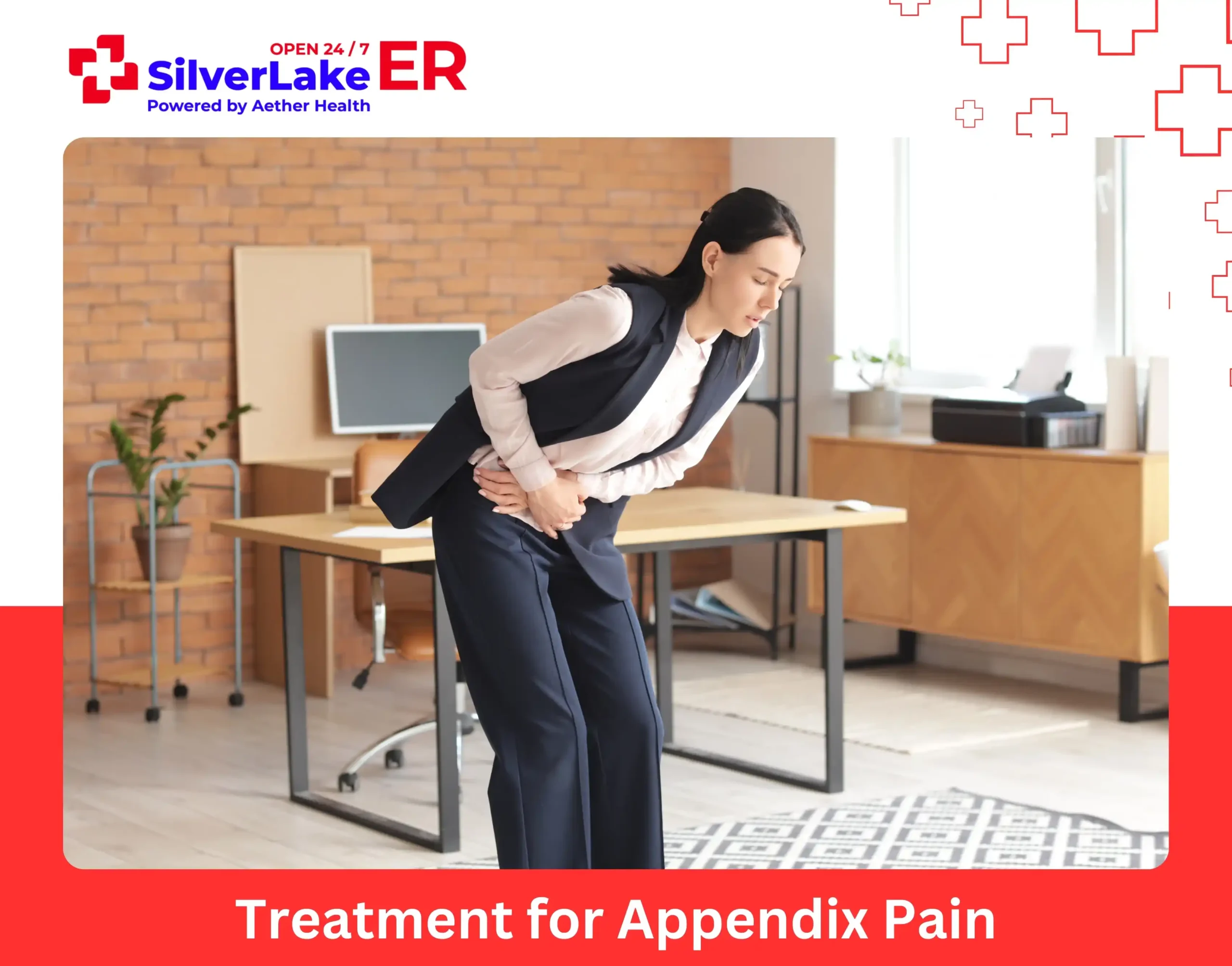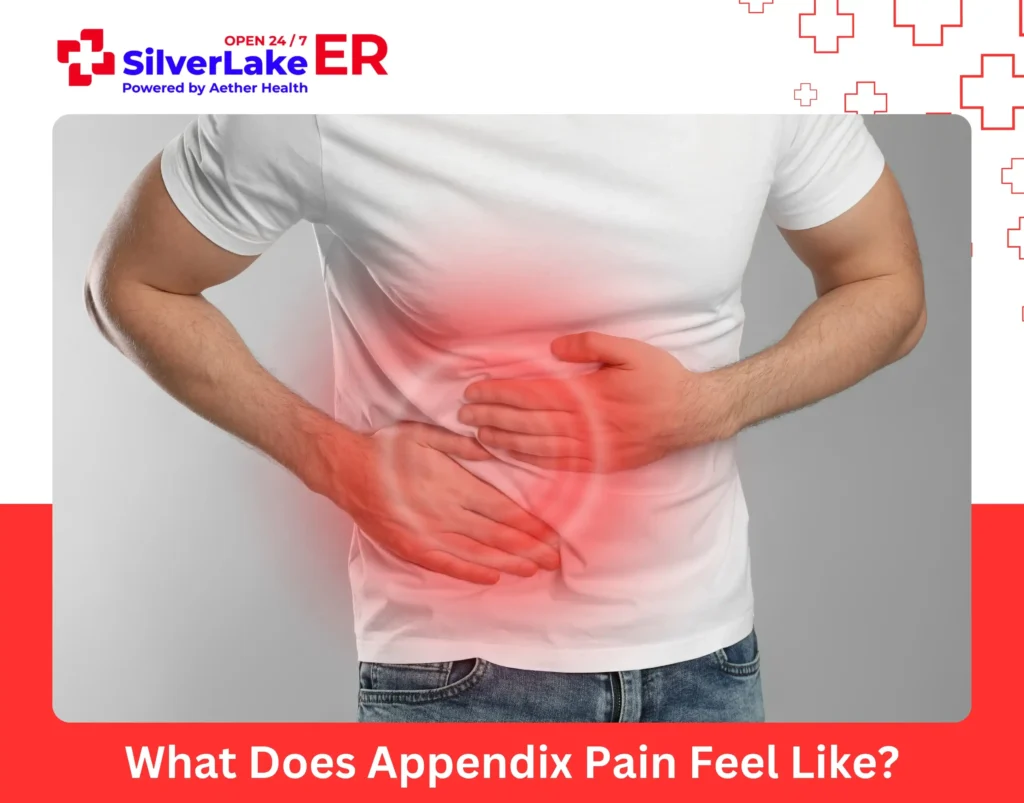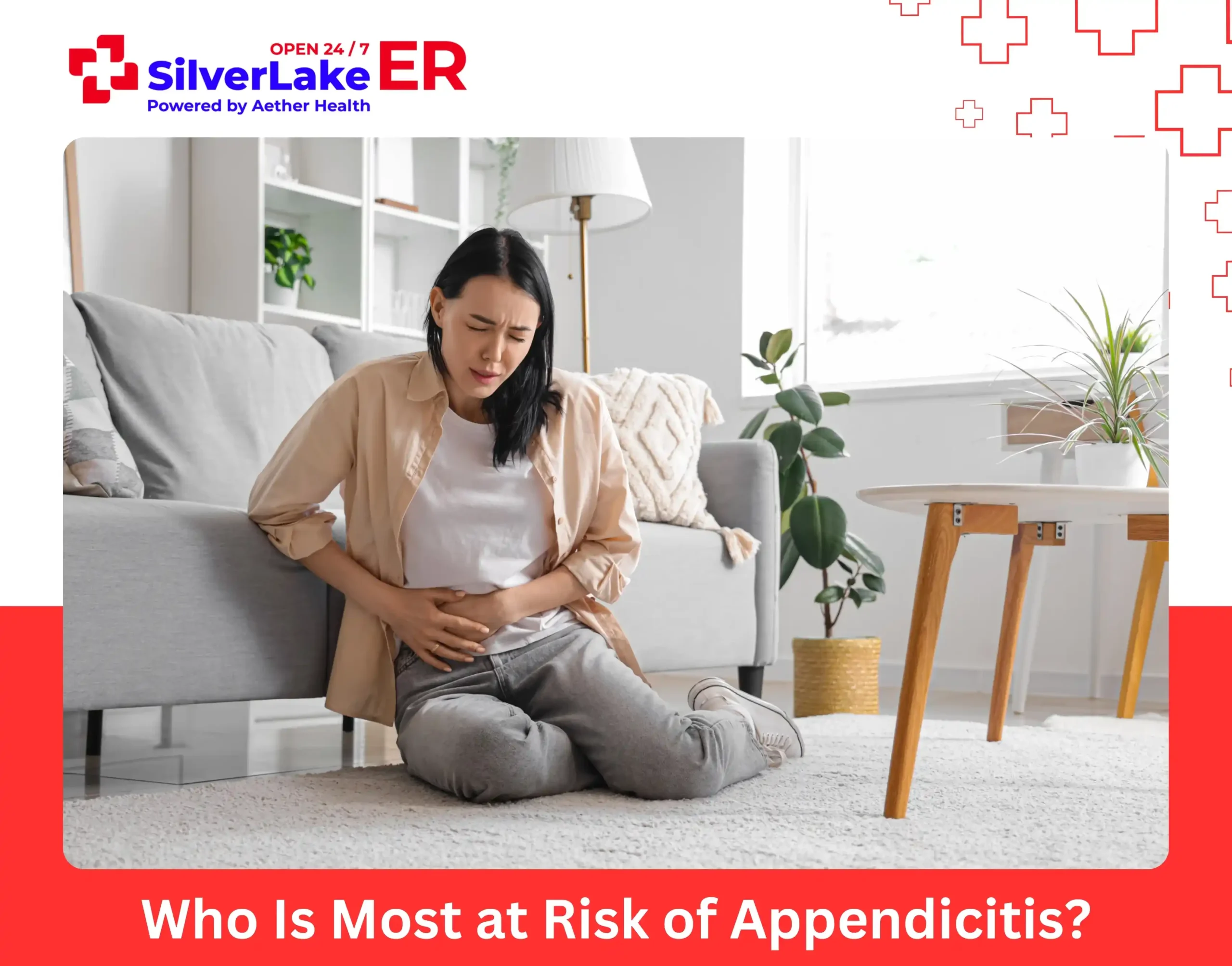The appendix is a small pouch of tissue attached to the beginning of the large intestine, located in the lower right part of your abdomen. Although its role in digestion is still debated, its medical significance is clear: when the appendix becomes inflamed, a condition known as appendicitis, it can cause intense abdominal pain and requires urgent treatment. Appendicitis is one of the most common surgical emergencies worldwide.
If you’ve ever wondered, “what does appendix pain feel like,” it’s important to understand its typical patterns, how it evolves, and how it differs from other causes of abdominal discomfort.
What Does Appendix Pain Feel Like A Dull?

Appendix pain feels like a dull ache near the belly button that quickly shifts to sharp, constant pain in the lower right abdomen, often worsening with movement or touch. This clear progression makes it different from common stomach discomforts like gas or indigestion.
- Starts near the belly button: Early appendicitis pain often begins as a vague, dull ache around the central abdomen. This happens because the initial irritation is deep inside and not well localized.
- Moves to the lower right side: Within a few hours, the pain tends to shift to the lower right quadrant, where the appendix sits. This migration of pain is considered a hallmark feature of appendicitis.
- Sharp, constant, and worsening: Unlike gas or indigestion, appendix pain doesn’t ease with rest, passing gas, or bowel movements. Instead, it becomes sharper and more constant with time.
- Pain worsens with movement: Walking, coughing, sneezing, or pressing on the area typically makes the pain worse. Many people find themselves hunched over or avoiding sudden movements.
- Tenderness on touch: Applying pressure to the lower right abdomen often elicits strong discomfort, and the pain may intensify when pressure is released (a classic sign called rebound tenderness).
Other Symptoms That May Accompany Appendix Pain
While pain is the most recognized symptom, appendicitis often comes with additional warning signs:
- Nausea and vomiting that follow the onset of pain
- Loss of appetite (a common early symptom)
- Low grade fever as the body responds to infection
- Bloating or abdominal swelling
- Constipation or diarrhea in some cases
- Difficulty passing gas due to intestinal irritation
These associated symptoms strengthen the likelihood of appendicitis when they appear alongside right sided abdominal pain.
How Appendix Pain Differs From Other Abdominal Pain
Abdominal pain can have many causes, but appendicitis has several features that help set it apart:
- Indigestion or gas pain usually comes and goes, improves with bowel movements, or passes on its own.
- Menstrual cramps occur in cycles and are generally lower in the abdomen, often accompanied by other menstrual symptoms.
- Gallbladder pain appears higher in the abdomen, under the right rib cage, and may radiate to the shoulder.
- Kidney stone pain is usually severe and colicky, starting in the flank and moving toward the groin. In contrast, appendix pain is progressive, steady, and moves from the belly button to the lower right abdomen. It does not resolve without treatment.
Who Is Most at Risk of Appendicitis?
Appendicitis can occur in anyone, but certain groups are more commonly affected:
- Children and teenagers between 10–19 years old are at the highest risk.
- Young adults up to age 30 are also commonly diagnosed.
- Men are slightly more likely to experience appendicitis than women.
- People with a family history of appendicitis may also be at greater risk.
When to Seek Emergency Care for Appendix Pain
Appendicitis is a medical emergency. You should seek immediate care if you notice:
- Severe, persistent abdominal pain that starts near the navel and shifts to the lower right side
- Pain that worsens with movement, coughing, or pressing on the abdomen
- Pain accompanied by fever, nausea, or vomiting
- Abdominal swelling or bloating that increases over time
A ruptured appendix can cause peritonitis, a life threatening infection that spreads throughout the abdominal cavity. This is why prompt diagnosis and surgery are essential.
Diagnosis of Appendicitis
Doctors use a combination of physical exams, blood tests, and imaging to diagnose appendicitis:
- Physical exam: Checking for tenderness, rebound pain, and guarding.
- Blood tests: Elevated white blood cell count can signal infection.
- Urine tests: To rule out urinary tract infections or kidney stones.
- Imaging: Ultrasound, CT scans, or MRI can confirm inflammation and guide treatment.
Treatment for Appendix Pain

The standard treatment for appendicitis is surgical removal of the appendix (appendectomy). This can be done through:
- Laparoscopic surgery: Minimally invasive and usually involves quicker recovery.
- Open surgery: Sometimes necessary in complicated or ruptured cases.
In some cases of uncomplicated appendicitis, antibiotics may be used initially, but surgery remains the most definitive treatment.
Recovery After Appendectomy
Recovery times depend on the type of surgery and whether the appendix ruptured:
- Laparoscopic surgery: Most people return to light activity within a week.
- Open surgery: Full recovery may take 4–6 weeks.
- Ruptured appendix: Longer hospital stay, antibiotics, and more cautious recovery.
Following your surgeon’s instructions about rest, wound care, and physical activity is key to smooth recovery.
Preventive Insights
There is no guaranteed way to prevent appendicitis, but some factors may lower risks:
- A diet high in fiber may support digestive health.
- Staying hydrated helps reduce constipation and intestinal blockages.
- Seeking early care for unexplained abdominal pain prevents delayed treatment.
Key Takeaway
Appendicitis pain is distinctive: it starts near the belly button, shifts to the lower right abdomen, and intensifies with time and movement. Unlike indigestion or muscle pain, appendix pain does not improve on its own. If you ever suspect appendicitis, do not wait — seek emergency medical care. Early treatment saves lives and ensures a quicker recovery.
Frequently Asked Questions (FAQs)
1. Can appendix pain go away on its own?
No. Appendicitis requires medical attention. Even if the pain temporarily eases, untreated appendicitis can lead to rupture.
2. How quickly does appendix pain develop?
The pain usually worsens within 12–24 hours, starting vague and becoming sharp and localized.
3. Is appendix pain always on the right side?
Typically yes, but rarely, due to unusual anatomy, pain may appear in other areas of the abdomen.
4. Can children and teens get appendicitis?
Yes. Appendicitis is most common in children, teens, and young adults but can affect any age group.
5. What happens if appendicitis is not treated?
The appendix can rupture, leading to peritonitis (a dangerous infection) or abscess formation, both of which can be life threatening.





